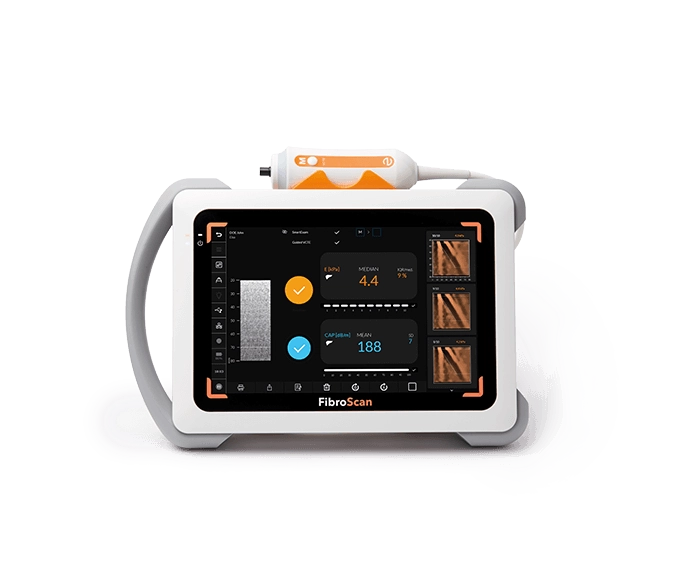
FibroScan® by echosens
The non-invasive solution for comprehensive management of liver health
Seamless liver health assessment for all
As a leader in liver health, we have elevated our core liver elastography technology to the next level with the introduction of Guided VCTE™ – our Next-Generation FibroScan® technology.


Two new visual indicators allow operators to quickly identify
the optimal measurement location.1
Computed by a continuous vibration of the probe transducer, these indicators intuitively guide the operator throughout the entire duration of the exam.
With Guided VCTE™, 96% of patients can be scanned in less than 4 minutes,
including patients with BMI≥35.
Based on the Guided VCTE™ indicators, AutoScan automatically triggers
10 valid measurements through a single click, enabling streamlined scanning
and a likely improved operator experience.
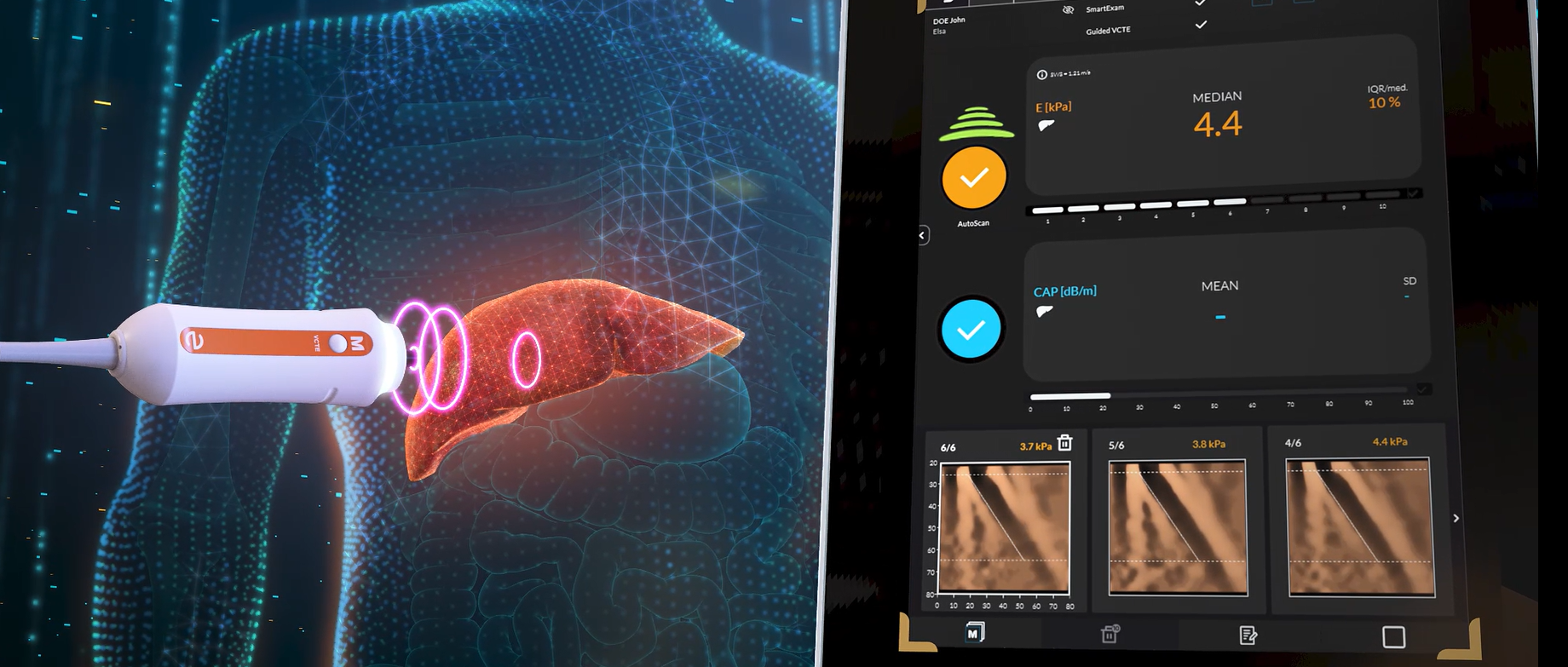
Improved reliability in the diagnosis and monitoring of steatosis
with Continuous CAP™ to decrease variability by 50%2.
Extended usage among patients with severe obesity with deeper assessment of liver fibrosis and steatosis as the maximum probe-to-capsula distance is increased by 28%*.
Automated features such as CAP™ validity criteria and automatic measurement depth selection to adapt to patient’s morphology
In this webinar, hear from key leaders in liver health detail their experience using the next-generation FibroScan® system, equipped with new Guided VCTE™ technology.
Learn more about how this technology impacts both the operator and physician experience, with a focus on optimizing liver health management through efficiency and standardization.
From installation, to training and local support, we provide you with the highest quality of services.
* Without SmartExam, the maximum recommended Probe-to-Capsula distance (PCD) is 35 mm. With SmartExam, it is 45mm, representing an increase of 28%.
References
1. Bastard, Cécile et al. “Guided-VCTE: An Enhanced FibroScan Examination With Improved Guidance and Applicability.” Ultrasound in medicine & biology vol. 51,4 (2025): 628-637.
2. E. Bardou-Jacquet et al. Validation of the Continuous Controlled Attenuation Parameter (CAPc) using the MRI-PDFF as reference. EASL 2022 poster #FRI-228.
The FibroScan® device (Models: 430 Mini+, 530 Compact and 630 Expert) is intended to measure liver stiffness (E) using Vibration Controlled Transient Elastography™ (VCTE™) at 50 Hz shear wave frequency and liver ultrasound attenuation coefficient (CAP™)* at 3.5 MHz. FibroScan® 630 Expert is also intended to measure spleen stiffness using VCTE™ at 100 Hz shear wave frequency. FibroScan liver stiffness measurements (LSM) by VCTE™ may aid the physician in determining the likelihood of cirrhosis and may be used, taken in context with other clinical and laboratory data, as an aid in the assessment of liver fibrosis. FibroScan CAP™ measurements may be used, taken in context with other clinical and laboratory data, as an aid in the assessment of hepatic steatosis. FibroScan® is indicated as a non-invasive aid for the clinical management, diagnosis, and monitoring of adult and pediatric patients with confirmed or suspected liver disease, as part of an overall assessment of the liver. Results in the pediatric population should be interpreted while considering the clinical condition and the overall patient profile. The FibroScan® device is intended for use by healthcare professionals in hospitals, clinics or any facility where healthcare is provided. *CAP™ refers to ultrasound attenuation coefficient (originally defined as Controlled Attenuation Parameter). CAP™ on S+ probe is only available with SmartExam capability. FibroScan® Gateway is a Non-Device Medical Device Data Systems (MDDS) and Interpretation Guide (included within myFibroScan application) are Non-Device Clinical Decision Support (CDS) that meet the criteria outlined in section 520(o)(1)(E) of the FD&C Act. © 2024 Echosens – Echosens™ and FibroScan® are trademarks owned by Echosens SA. All rights reserved.
The Guided VCTE™ technology is only available on the latest FibroScan® systems and can be used only with M+ and XL+ probes.

The non-invasive solution for comprehensive management of liver health
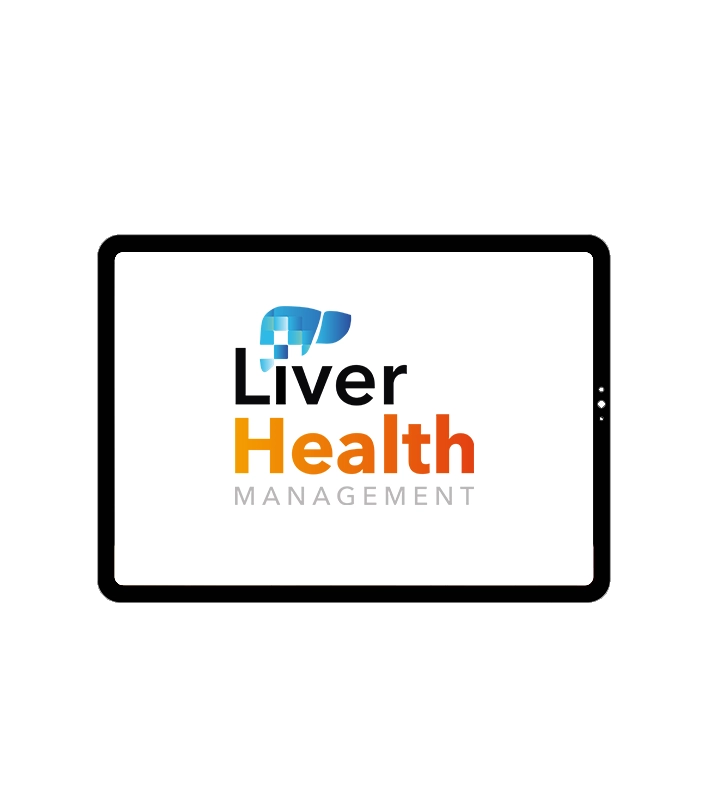
Cloud-based solution to assist clinicians in providing comprehensive liver care.
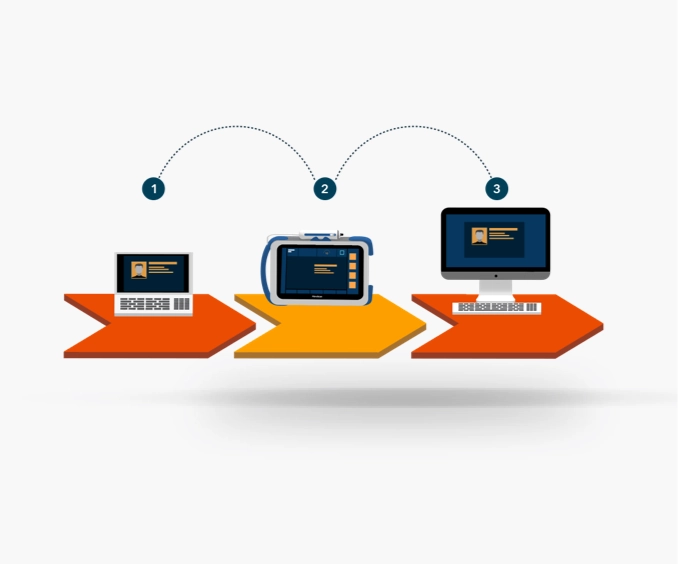
Optimize clinical workflows with real-time secure data transmission
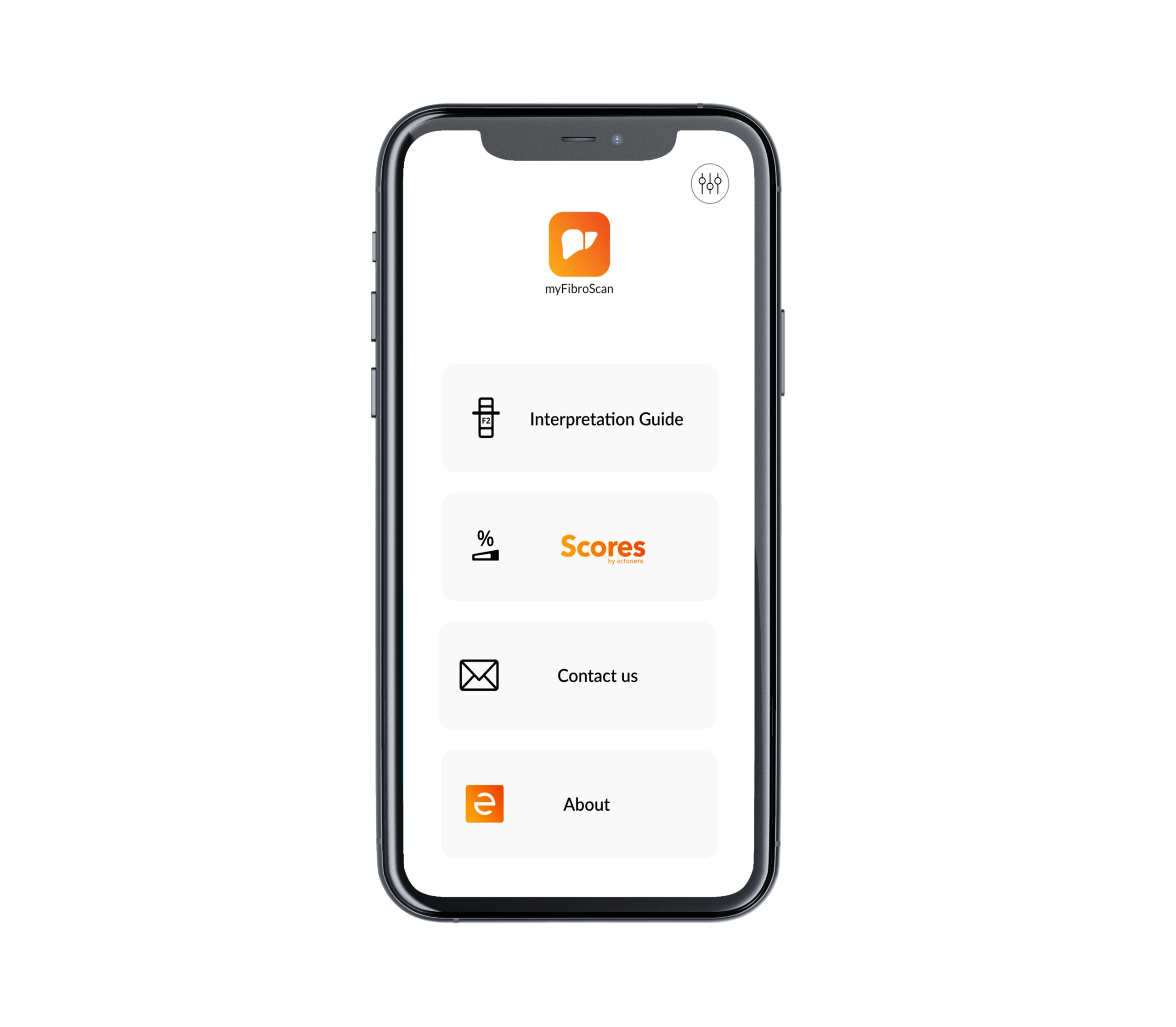
Your everyday FibroScan® companion – free application